Risotto Milanese: How Milan’s Iconic Saffron Rice Dish Was Born
Ever wondered how to make authentic Risotto Milanese? Discover the secrets of perfect saffron-infused Risotto Milanese - from traditional Italian recipes and cooking techniques to ideal wine pairings and where to find the best Risotto Milanese in Milan. Learn why this golden risotto is Italy's most iconic comfort food!
Table of Contents
- Chapter 1: The Historical Tapestry of Risotto Milanese
- Chapter 2: The Core Craftsmanship of Risotto Milanese
- Chapter 3: Homemade Risotto Milanese: A Family Tradition
- Chapter 4: Pairing Recommendations: Complements to the Golden Dish
- Chapter 5: Regional Specialties: Milanese Risotto Beyond the City Limits
- Chapter 6: Where to Savor Risotto Milanese: Milan’s Top Restaurants
- Chapter 7: Q&A: Answering Your Burning Questions
Risotto Milanese, often hailed as the crown jewel of Lombard cuisine, is more than just a dish—it is a cultural icon, a testament to Milan’s rich history, and a staple on every Italian family’s table. As a native of Milan, I take immense pride in sharing the secrets of this golden-hued delicacy, which has transcended generations to become a symbol of my city’s culinary prowess. This article will delve into the origins, craftsmanship, and versatility of Risotto Milanese, offering insights into its preparation, regional variations, and where to savor it in its purest form.
Chapter 1: The Historical Tapestry of Risotto Milanese
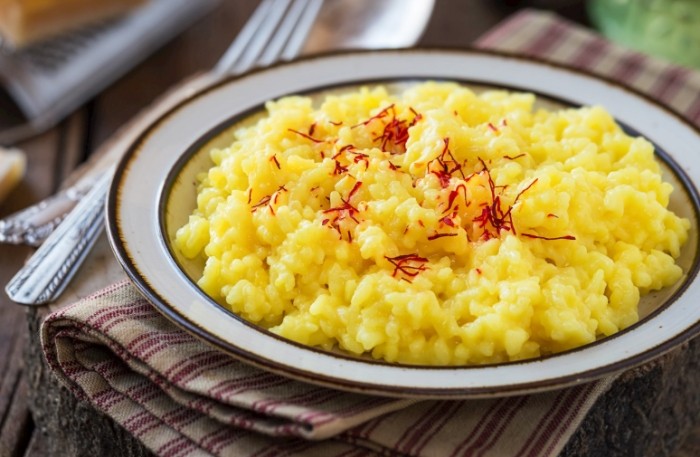
1.1 Origins: From the Duomo’s Scaffolding to Royal Tables
The story of Risotto Milanese begins in the 16th century, during the construction of Milan’s iconic Duomo. Legend has it that a young apprentice to the master glassmaker, who was responsible for the cathedral’s stained-glass windows, accidentally dropped a pinch of saffron into a pot of rice while preparing lunch for the workers. The vibrant yellow hue and earthy aroma of saffron transformed the humble rice dish into something extraordinary. The workers, impressed by the dish’s beauty and flavor, dubbed it risotto alla milanese.
Over time, the dish gained popularity among Milan’s elite. In the 19th century, it became a fixture at royal banquets, particularly during the reign of the Sforza dynasty, where it was paired with ossobuco (braised veal shanks). This pairing remains a classic to this day, embodying the harmony between Milan’s artisanal heritage and its culinary traditions.
1.2 Evolution: From Peasant Fare to Gourmet Delight
Initially, Risotto Milanese was a simple dish, prepared with basic ingredients like Carnaroli or Arborio rice, butter, onions, and saffron. However, as Milan grew into a cultural and economic hub, chefs began experimenting with the recipe, incorporating bone marrow, beef stock, and even white wine to enhance its depth of flavor. Today, while traditionalists adhere to the classic formula, modern interpretations may include additions like Parmigiano-Reggiano or a drizzle of truffle oil, reflecting the city’s dynamic culinary landscape.
Chapter 2: The Core Craftsmanship of Risotto Milanese
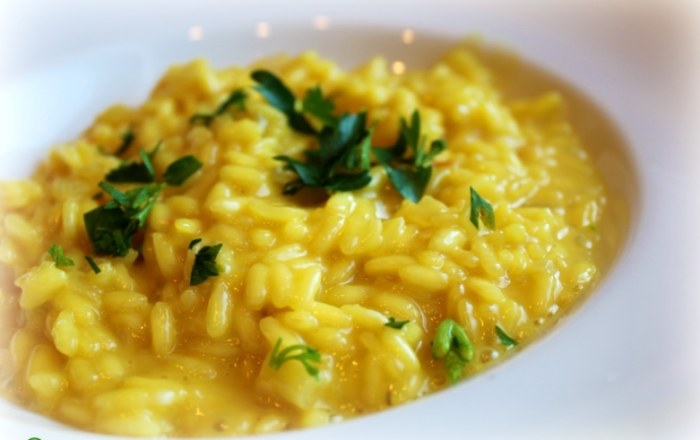
2.1 Key Ingredients: The Pillars of Perfection
- Rice: The foundation of any risotto, Carnaroli or Arborio varieties are preferred for their high starch content, which creates the dish’s signature creamy texture.
- Saffron: The soul of Risotto Milanese, saffron threads impart a distinctive golden hue and a subtle, floral aroma. Milanese chefs swear by Kashmiri or Spanish saffron for their vibrant color and robust flavor.
- Broth: A rich, savory stock, typically made from beef or veal bones, forms the liquid base. Some chefs add a splash of white wine for acidity.
- Butter and Onion: Sautéed onions in butter create a fragrant base, while a final dollop of butter at the end adds richness.
- Optional Additions: Bone marrow, Parmigiano-Reggiano, or a pinch of nutmeg can elevate the dish further.
2.2 The Art of Cooking: Step-by-Step Mastery
- Toast the Rice: Begin by sautéing the rice in butter until lightly toasted, sealing in its starch.
- Infuse with Saffron: Add saffron threads to the broth, allowing them to steep for 10–15 minutes before incorporating into the rice.
- Gradual Broth Addition: Cook the rice by adding broth one ladle at a time, stirring constantly to release starch and create a creamy consistency.
- Final Flourish: Once the rice is al dente (18–20 minutes), stir in a final knob of butter and a sprinkle of Parmigiano-Reggiano. Let the risotto rest for 2–3 minutes before serving.
2.3 Common Mistakes to Avoid
- Overcooking the Rice: Risotto should be tender yet firm, never mushy.
- Skipping the Saffron Steep: Pre-steeping saffron in broth ensures even color distribution.
- Stirring Too Vigorously: Gentle, constant stirring is key to releasing starch without breaking the grains.
Chapter 3: Homemade Risotto Milanese: A Family Tradition
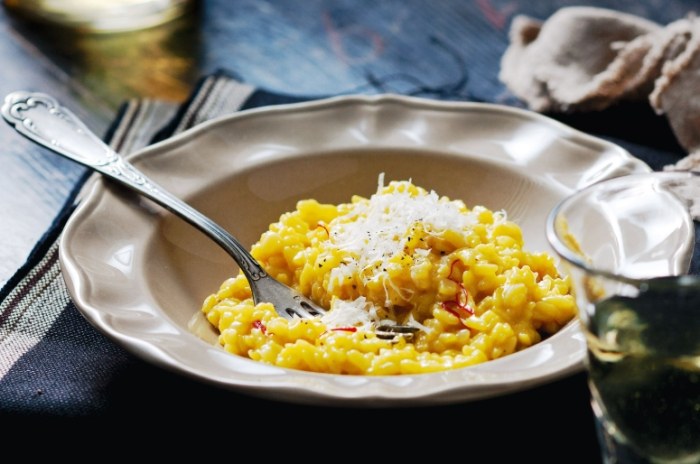
3.1 Classic Recipe: A Step-by-Step Guide
Ingredients (Serves 4):
- 320g Carnaroli rice
- 1.5L beef or veal stock
- 1 large onion, finely chopped
- 50g unsalted butter
- 1 pinch of saffron threads
- 50g Parmigiano-Reggiano, grated
- Salt and pepper to taste
Instructions:
- Heat the stock in a saucepan and steep the saffron threads for 10 minutes.
- In a separate pan, melt 30g of butter and sauté the onion until translucent.
- Add the rice and toast for 2–3 minutes until lightly golden.
- Begin adding the saffron-infused stock, one ladle at a time, stirring continuously until absorbed.
- Continue this process for 18–20 minutes until the rice is al dente.
- Remove from heat, stir in the remaining butter and Parmigiano-Reggiano. Season with salt and pepper.
3.2 Variations: Personalizing the Classic
- Vegetarian Version: Substitute vegetable stock and add roasted mushrooms or asparagus.
- Luxury Twist: Incorporate a spoonful of black truffle paste or a drizzle of truffle oil.
- Seafood Fusion: Pair with sautéed shrimp or scallops for a coastal flair.
Chapter 4: Pairing Recommendations: Complements to the Golden Dish

4.1 Classic Pairings: Time-Honored Combinations
- Ossobuco alla Milanese: Braised veal shanks with gremolata (a mix of lemon zest, garlic, and parsley) are the quintessential companion to Risotto Milanese.
- Bistecca alla Fiorentina: A thick, char-grilled T-bone steak provides a hearty contrast to the risotto’s creaminess.
- Insalata Mista: A simple green salad with a light vinaigrette balances the richness of the dish.
4.2 Wine Pairings: Enhancing the Experience
- Barolo: A full-bodied Nebbiolo from Piedmont complements the risotto’s umami flavors.
- Franciacorta: A sparkling wine from Lombardy adds a refreshing touch.
- Amarone della Valpolicella: For a bold pairing, this rich red wine stands up to the risotto’s depth.
Chapter 5: Regional Specialties: Milanese Risotto Beyond the City Limits
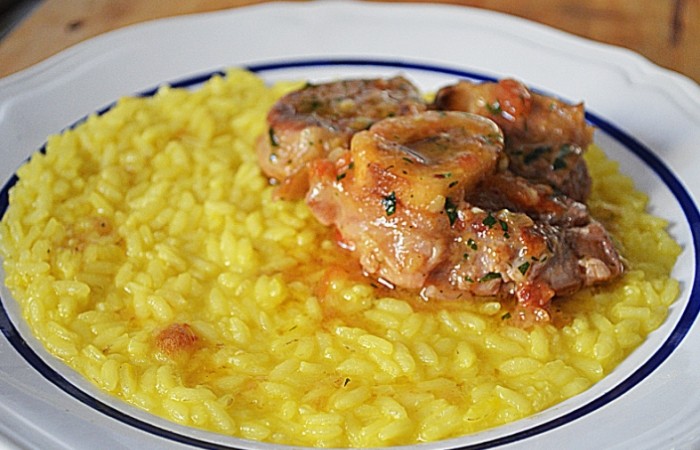
5.1 Lombard Variations: Neighboring Interpretations
- Risotto alla Pilota (Mantua): Saffron-infused rice paired with sausage and pork rind, reflecting Mantua’s meat-centric cuisine.
- Risotto con Zucca (Bergamo): Pumpkin-infused risotto, a nod to Bergamo’s agricultural heritage.
- Risotto con Noci (Brescia): Walnut-accented risotto, showcasing Brescia’s nut orchards.
5.2 International Adaptations: Global Takes on a Classic
- Spanish Arroz con Azafrán: A similar dish featuring saffron, though often cooked with chicken or seafood.
- Indian Saffron Rice: Aromatic basmati rice flavored with saffron, cardamom, and cloves.
- Japanese Saffron Chahan: Fried rice with saffron, a fusion of Italian and Japanese techniques.
Chapter 6: Where to Savor Risotto Milanese: Milan’s Top Restaurants
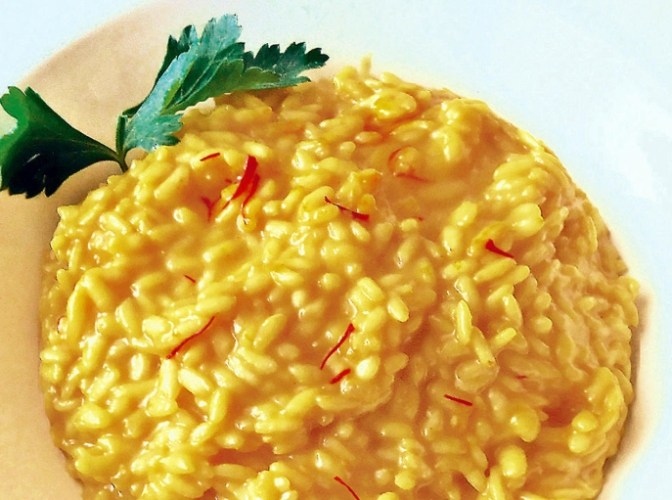
6.1 Iconic Eateries: A Guide to Milan’s Finest
| Restaurant | Specialty | Price Range | Ambiance |
|---|---|---|---|
| Cracco | Risotto Milanese with Ossobuco | €€€€ | Elegant, modern |
| Trattoria Milanese | Traditional Family Recipe | €€ | Cozy, rustic |
| Ristorante Da Giacomo | Saffron-Infused Luxury | €€€€ | Sophisticated |
| Antica Trattoria della Pesa | Heritage Dishes | €€€ | Historic, charming |
6.2 Hidden Gems: Off-the-Beaten-Path Spots
- Osteria del Binari: A hole-in-the-wall spot serving homestyle risotto.
- La Brisa: A family-run trattoria known for its generous portions.
- Trattoria Toscana: While Tuscan-inspired, their Milanese risotto is a local favorite.
Chapter 7: Q&A: Answering Your Burning Questions
7.1 What is a Milanese Risotto?
Risotto Milanese is a classic Italian dish originating from Milan, characterized by its vibrant golden hue, achieved through the use of saffron. It is traditionally made with Carnaroli or Arborio rice, cooked in a rich beef or veal broth, and finished with butter and Parmigiano-Reggiano. The dish is often paired with ossobuco, braised veal shanks, and is a staple of Lombard cuisine.
7.2 What Do You Eat with Risotto alla Milanese?
Risotto alla Milanese pairs beautifully with a variety of dishes, including:
- Ossobuco alla Milanese: Braised veal shanks with gremolata.
- Bistecca alla Fiorentina: A grilled T-bone steak.
- Insalata Mista: A light green salad.
- Roasted Vegetables: Asparagus, mushrooms, or zucchini.
7.3 Does Milanese Risotto Have Cream?
No, traditional Milanese risotto does not contain cream. Its creamy texture is achieved through the slow release of starch from the rice during cooking, combined with the addition of butter and Parmigiano-Reggiano at the end. Modern variations may include cream for added richness, but this is not authentic to the classic recipe.
7.4 What Is the Unique Hue of Milanese Style Risotto?
The unique hue of Milanese risotto comes from saffron, the world’s most expensive spice. Saffron threads, when steeped in hot broth, release a golden-yellow pigment and a distinct, earthy aroma. This not only imparts color but also adds a subtle, floral flavor that defines the dish.
Risotto Milanese is more than a dish—it is a living testament to Milan’s history, culture, and culinary artistry. Whether enjoyed in a Michelin-starred restaurant or prepared at home with family, it embodies the essence of Lombard tradition. As a Milanese local, I invite you to embrace this golden legacy, to savor its richness, and to share it with the world. Buon appetito!